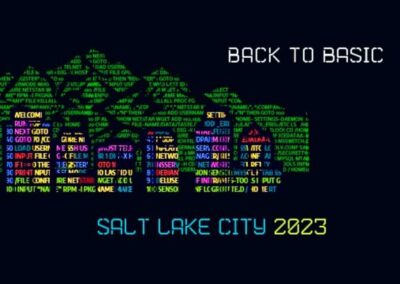Whether you are new graduate, an experienced Developer, SysAdmin, SRE, or manager, DevOps Days provides an economical and effective opportunity to improve your team’s knowledge of solving complex development, testing, and operational tasks.
At DevOps Days you learn how successful IT organizations are leveraging today’s technology to bring maximum value to their customers while providing operational efficiencies and cost savings to their organizations.
Technology is rapidly changing and for individuals and companies to stay competitive they must understand the opportunities and constraints in their development pipeline. DevOps Days brings together people, processes, and technologies to enable continuous delivery of value to their end users.
Here are five reasons you should attend SLC DevOps Days:
- Meet experts and influencers face to face. Online videos and courses cannot replace the benefit of meeting others that have actually solved the problems you are working on.
- Learn new tools and ideas to solve your organizations development, testing, and operational problems.
- Come with a particular problem you are trying to solve in your organization. For example, “How do we move our monolithic application to microservices?” or “We want to move to the cloud. What is the best strategy to move from our data center?
- Find new opportunities by networking with others. DevOps Days give you chance to see other opportunities in our local area for your organization and for yourself. Managing your career and staying updated on latest technology trends makes you more valuable to your company and your career.
- “Sharpen the saw” – the 7th Habit of Stephen Covey’s, The 7 Habits of Highly Effective People. Getting out of the building and looking at a problem from different perspective can lead to excellent results.
Here is a short list of a few of the excellent presentations and workshops you will see at the event.
Blending Product Thinking with Architecture – Joel Tosi
Too much design up front and you are bumping into the design all of the time (and losing time). Not enough design and your system can crumble in reality. How do you blend architecture so you have the right decisions at the right time, and give them enough due dilligence? How do you embrace cloud and microservices and not risk getting into different failure scenarios or overly complicated maintenance and ripple effects?
In this session we will walk through visualizations that help teams blend product thinking with architecture. Along the way, we will look at microservices and domain modeling as well as chaos engineering and fault tolerance – blending all of these into a context that is consumable by all and gives the right emphasis at the right time.
Leave this session with simple visualizations and approaches that you can apply immediately to start blending product with architecture, especially if you are looking to run in a cloud world.
DevOps, 12-Factor, and Open Source – Justin Reock
A surfeit of software philosophies have hit the industry over the last few years, all claiming to reduce friction in digital transformation. But what does that mean, how does it impact your design philosophy, and where does open source play into all of this? We’ll talk about the roots of DevOps in the Theory of Constraints, how 12-Factor principles can guide your microservice and cloud migration refactor efforts, and how building an optimal strategy for the use of open source within your organization can tie all of these concepts together. Finally, we’ll look at the future of DevOps and how Developer Productivity Engineering is evolving to address the next set of bottlenecks, those hiding within the developer experience.
Justin Reock, Chief Evangelist and Field CTO of Gradle, Inc, will take you through a visually-guided tour of modern DevOps and how we came to it, so that you never again have to utter those fallacious and all-to-common words: “There are lots of definitions of DevOps.”
Intro to Platform Engineering and How to Build an Internal Developer Platform – Jonathan Stevens
Platform Engineering has become a major buzzword in the developer community over the last few years. It’s a term that is being thrown around in many ways and there are a lot of different opinions about what Platform Engineering actually is. It is a new-enough concept that it does not have a how-to guide similar to the SRE Handbook. As of yet, nothing has been published by leaders of the industry to help guide you through the process of building a platform engineering team.
Platform engineering is the discipline of building tooling and infrastructure that enables engineering teams to be self-sufficient while working faster and more efficiently.
Platform engineering teams build the Internal Developer Platform for an organization. An Internal Developer Platform defines golden paths and enables developer self-service through infrastructure and tooling that reduces the cognitive load on developers. At Weave, our platform engineering team has been around for several years and is known as the Developer Experience team, or DevX. I believe we are in a unique position, as a team that has been at this a long time, to showcase what has worked for us. We have been building, what I believe to be, a world-class Platform Engineering team and Internal Developer Platform. As the first member of our DevX team, and current Engineering Manager, I wanted to share some of our findings and provide some real-life examples of how to get started in building an Internal Developer Platform.



